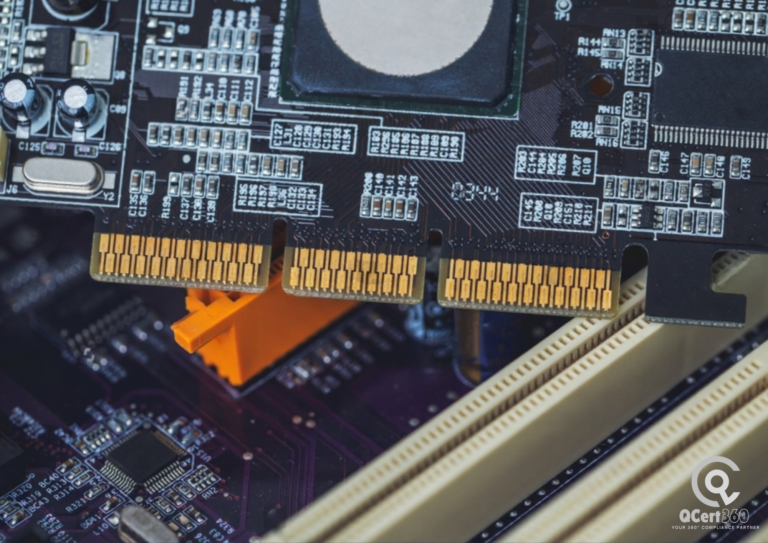
If you’re an electronics exporter, understanding ROHS compliance and CE marking registration is non-negotiable for accessing key markets, especially Europe. But what does it mean to link ROHS with CE marking? Why does this integration matter? And how can you practically align both certifications to avoid costly delays and compliance headaches?
In this article, we’ll break down the essentials — explaining what ROHS and CE marking are, why linking them makes sense, and how you can streamline your certification journey. We’ll also dive into a real-life case study and address frequently asked questions to help your business succeed.
What is ROHS Compliance and Why Does It Matter?
ROHS (Restriction of Hazardous Substances) is a critical directive aimed at reducing the environmental and health impacts of electronic products. It restricts dangerous substances such as lead, mercury, cadmium, hexavalent chromium, and flame retardants from being used in electrical and electronic equipment.
Achieving ROHS certification of compliance means your product has been tested and verified to meet these strict substance limits. This certification not only ensures that your electronics are safer for consumers and the environment but also grants you access to markets that demand stringent environmental protections.
Why does this matter for your business? Without ROHS compliance, your products risk being blocked at customs, recalled from shelves, or barred from tender opportunities. Many retailers and regulators explicitly require proof of ROHS adherence before they’ll accept or distribute your electronics.
What is CE Marking and Why is CE Marking Registration Essential?
CE marking is the declaration that your product complies with all relevant European Union legislation, including safety, health, and environmental standards. It covers a wider scope than ROHS, encompassing directives such as Low Voltage, EMC (Electromagnetic Compatibility), and WEEE (Waste Electrical and Electronic Equipment), among others.
The CE marking certification process involves compiling technical documentation, performing required tests, and declaring conformity to ensure your product is fit for sale throughout the European Economic Area (EEA). Without CE marking, your product cannot legally enter or circulate in these markets.
In short, while ROHS focuses on limiting hazardous materials, CE marking ensures that your product meets comprehensive safety and regulatory requirements. Both are essential pillars of regulatory compliance for electronics exporters.
Why Linking ROHS and CE Marking Makes Sense for Electronics Exporters
When you think about ROHS and CE integration, it’s about more than just ticking two boxes. Both certifications involve overlapping compliance processes, documentation, and testing requirements. By managing them together, you can:
- Avoid duplicated efforts: Testing for hazardous substances under ROHS is often part of the broader CE marking technical file requirements. Handling both simultaneously reduces repetitive testing and paperwork.
- Speed up your time-to-market: Streamlined processes mean fewer delays during certification, letting you launch your product faster.
- Cut certification costs: Less duplication means lower laboratory fees, fewer consultant hours, and less administrative overhead.
- Build stronger regulatory credibility: Presenting a unified certification package reassures distributors, regulators, and clients that your product is comprehensively compliant.
- Meet all CE marking requirements efficiently: Since ROHS is a mandatory component of CE marking for electronic devices, combining them ensures full regulatory alignment without gaps.
In today’s competitive electronics market, these advantages can be decisive.
How to Link ROHS Compliance with CE Marking for Market Entry
Linking ROHS compliance with CE marking registration isn’t just theoretical — it requires a clear, step-by-step approach:
- Understand overlapping requirements
Review the technical standards and documentation needed for both ROHS and CE marking. Many ROHS tests (like heavy metal content) are integral to CE technical files. - Develop unified documentation
Consolidate your risk assessments, test reports, and declarations of conformity into a single CE product certification dossier that includes ROHS results. This holistic file makes audits and inspections more straightforward. - Plan integrated testing
Partner with accredited labs that offer combined ROHS and CE marking testing services. This saves time and ensures consistent data quality. - Maintain ongoing compliance
Compliance doesn’t end at certification. Regularly monitor your supply chain for ROHS-conforming components and keep up with updates in CE marking requirements. - Train your team
Ensure your compliance, product development, and quality teams understand both standards and how they interrelate to avoid costly mistakes during product design or documentation.
Real-Life Case Study: How a Manufacturer Streamlined ROHS and CE Compliance
Consider a mid-sized electronics manufacturer specializing in smart home devices. Initially, they approached ROHS compliance and CE marking attestation as separate projects — each with its own timelines, labs, and documentation.
This siloed approach led to:
- Certification delays due to mismatched schedules
- Increased costs from duplicate tests and consultant fees
- Confusion over documentation updates
By seeking expert advice, they transitioned to an integrated strategy that combined their ROHS and CE integration efforts. Benefits included:
- Cutting overall certification time by 40%
- Reducing compliance costs by 25% through shared testing and streamlined documentation
- Expanding faster into multiple European markets with a single, unified certification package
- Enhancing brand reputation with a clear, comprehensive CE mark for trading
This case illustrates how linking ROHS with CE marking delivers real, measurable advantages in the global electronics market.
What Are the Common Challenges in ROHS and CE Marking Integration?
Many electronics exporters face significant hurdles when combining ROHS compliance with CE marking conformity. These challenges can delay certification, increase costs, and risk non-compliance if not managed effectively. Here are the main obstacles:
Complex Documentation
Managing different documentation formats and requirements for ROHS certification of compliance and CE marking requirements is a major challenge. While there is overlap, each demands specific technical files, declarations of conformity, and test reports. Without a clear strategy, exporters risk redundant or inconsistent documents, complicating audits. Effective ROHS and CE integration means consolidating these into one cohesive CE product certification dossier that also satisfies ROHS mandates.
Multiple Stakeholders
Coordinating labs handling ROHS certification tests, consultants advising on CE marking, and certification bodies is demanding. Each operates on different schedules, so managing communication and timelines requires proactive project management to avoid delays and misalignment.
Regulatory Updates
Both ROHS directives and CE marking standards regularly change. Staying current with these updates is vital to maintain compliance and market access. Exporters must continuously adapt internal processes and update documentation as part of ongoing post-market compliance.
Timing Conflicts
ROHS testing and CE marking audits often don’t align, causing bottlenecks. Specialized labs for ROHS may have longer turnaround times than CE marking inspections. Exporters treating these certifications separately often face delays. Integrated planning and working with labs offering combined testing help reduce timing conflicts.
Post-Market Compliance
Certification is just the beginning. Continuous monitoring—including supplier audits, product testing, and regulatory tracking—is crucial to ensure ongoing ROHS compliance and CE mark validity. Many exporters overlook this, risking penalties or product recalls.
Bottom line: While integrating ROHS compliance with CE cert can be challenging, proactive planning and expert support greatly reduce risks, speed up certification, and ensure your electronics meet all required quality and safety standards.
Why Do Electronics Exporters Need Both ROHS and CE Marking?
For electronics exporters aiming to access European and other regulated markets, understanding why ROHS compliance and CE marking are both mandatory is essential. These two certifications address different, but complementary, aspects of product safety and market eligibility.
ROHS focuses specifically on environmental safety by restricting hazardous substances in electrical and electronic equipment. Its goal is to protect consumers and ecosystems from toxic materials like lead, mercury, and cadmium. Achieving ROHS certification of compliance confirms your product meets these strict substance limits, which is vital for sustainable, safe electronics.
On the other hand, CE marking ensures your products meet the full range of European Union safety, health, and environmental standards. This includes electrical safety, electromagnetic compatibility, and waste management directives. CE marking is a legal requirement to sell products in the European Economic Area, acting as your product’s “passport” for trade.
Without both certifications, your product cannot legally enter or remain on the EU market. Exporters who invest in ROHS and CE integration not only ensure their products are safe and environmentally responsible but also demonstrate operational excellence and regulatory maturity to customers, regulators, and partners.
Simply put, ROHS compliance guarantees environmental safety, while CE marking compliance requirements confirm comprehensive product conformity. Together, they form a non-negotiable foundation for successful electronics exports.
Best Practices for ROHS Compliance and CE Marking Together
To maximize efficiency and reduce costs when pursuing ROHS certification alongside CE marking, electronics exporters should adopt these best practices:
- Engage Early with Certification Consultants
Starting conversations with experienced consultants early in the product development cycle can help you craft an integrated compliance strategy. Consultants can advise on how to combine ROHS compliance testing with CE marking technical files to avoid duplication and ensure all requirements are met.
- Choose Accredited Labs That Offer Combined Testing
Select testing laboratories capable of conducting both ROHS certification of compliance and CE marking tests. Labs offering combined services help streamline your certification timeline, reduce administrative overhead, and provide cohesive test reports suitable for both certifications.
- Centralize Your Technical Documentation
Maintain a single repository for all compliance documents, including test reports, risk assessments, and declarations of conformity. Centralizing documentation simplifies updates, supports internal audits, and improves readiness for official inspections related to both ROHS and CE marking requirements.
- Train Your Teams Regularly
Ensure your quality assurance, product development, and regulatory teams understand the nuances of both ROHS and CE marking standards. Ongoing training on regulatory changes, compliance best practices, and internal processes helps prevent costly errors and supports continuous improvement.
- Establish a Post-Market Monitoring System
Certification is only the beginning. Implement systems to monitor suppliers, audit products periodically, and track regulatory updates affecting both ROHS and CE marking. This proactive approach helps maintain continuous compliance and mitigates the risk of market withdrawals or penalties.
By embracing these best practices, electronics exporters can seamlessly integrate ROHS compliance with CE marking, accelerating market access while minimizing risk and cost. This unified approach builds stronger compliance foundations and enhances your reputation as a reliable, responsible electronics supplier.
Final Thoughts
Linking ROHS compliance with CE marking is a smart, strategic step for electronics exporters aiming for hassle-free, fast market entry. Together, they ensure your products are safe, environmentally friendly, and meet all required standards to compete globally.
By adopting an integrated approach, you reduce costs, accelerate certification, and strengthen your reputation with regulators and customers alike.
Start planning your combined ROHS and CE integration today and set your products up for success in competitive international markets by partnering with Qcert360 today.
FAQs About Linking ROHS and CE Marking
- What’s the difference between ROHS compliance and CE marking?
ROHS limits hazardous substances in electronics; CE marking confirms overall product safety and regulatory compliance in the EU. - Can I get ROHS certification without CE marking?
Yes, but CE marking is typically required for selling electronics in Europe, so both are necessary. - How long does the combined ROHS and CE marking certification process take?
It varies by product complexity but generally ranges from 3 to 6 months. - Are ROHS and CE marking recognized globally?
CE marking applies mainly in the EU; ROHS principles are adopted in various regions but with some local differences. - Can one lab handle both ROHS and CE testing?
Many accredited labs offer integrated testing, which helps streamline the certification process. - What happens if my product fails ROHS testing during CE marking?
Non-compliance can delay certification; corrective actions and re-testing are required before market entry. - Is ongoing monitoring required after CE Mark certification?
Yes, maintaining compliance post-market is critical to avoid penalties and recalls. - How often do ROHS and CE marking regulations change?
Both are updated periodically; staying informed is essential for compliance. - Does CE marking cover environmental impact beyond ROHS?
Yes, CE marking may include directives like WEEE for waste management and energy efficiency. - How does linking ROHS with CE marking reduce costs?
It minimizes duplicate testing and paperwork, reducing certification time and expenses.


